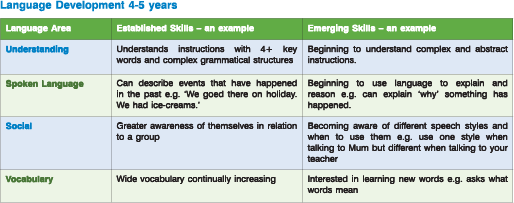Speech Delay versus Speech Disorder in the Context of Language Development
In a previous edition we discussed the difference between speech delay and speech disorder. In this issue we will be considering delay versus disorder in the context of language development. Children’s language skills develop at very different rates and the children beginning school this year will show a huge variation in their ability to understand and use language. Although the rate may vary, there is specific pattern that we expect this development to follow. The rate at which children develop their language skills is affected by a number of factors. Research shows that the language of children from socially disadvantaged backgrounds develops at a slower rate than that of those from more privileged backgrounds. Birth order, gender and regional variations also have an impact.
If a child is following the normal pattern of development but at a slower rate than expected they may be described as having a language delay. If a child’s language skills do not reflect this normal developmental pattern their language may be described as having a language disorder or impairment. Because of this variation in normal language development it can be difficult to make a distinction between language delay and language disorder in children under 4.00 years.
The developmental tables on the Infant and Junior Language Link websites outline developmental stages. It is important to note that children with receptive language impairments (impairments of understanding) have a poorer prognosis than those with predominantly expressive language impairments (spoken language impairments). It can be very difficult to work out the level at which a child is understanding through observation alone and it was for this reason that the Language Link assessment was developed. The assessment compares the development of a child’s understanding of language with that of his or her peers. Children who score between the 6th and 16th percentile may be considered to have a mild to moderate delay. The Language Link resources and interventions are targeted at this group of children and aim to support their development of understanding.
Children scoring below 6th percentile are said to have a moderate to severe delay. A delay of such significance often suggests a more complex language difficulty and for this reason we recommend discussing any child who scores in this range with your speech and language therapist. The Language Link assessments are not diagnostic tools and only your therapist, through detailed assessment, can diagnose a language disorder.
There is often a family history of language disorder and it usually affects vocabulary and grammar. A child may have word finding difficulty, poor memory for new words and sentences and difficulty following instructions. Language disorder may also be associated with other neurodevelopmental disorders.
We will look at some of the other disorders that may occur with or present as language disorders in future issues of this magazine.
Language Development 4-5 Years

Please login to view this content
Login